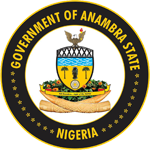OUR GOVERNMENT AND ITS STRUCTURE
Anambra governance structure proves Aristotle’s political theory of over a thousand years. Aristotle said, “If liberty and equality, as is thought by some, are chiefly to be found in democracy, they will be best attained when all persons alike share in the Government to the utmost” Ndi Anambra has been in pursuit of both liberty and equity all through history.
Governance in Anambra State is based on the 1999 constitution of the Federal Republic of Nigeria which provides for a Three-Tier governance structure of federal, State, and local Government each having an executive, legislative and judicial arm.

“As a humane and progressive government, we shall strive to deliver the difficult change with a human face. As we transit into a non-oil economy, our strategy is a small open economy framework embedded in 21st Century imperative of Everything Technology: we seek to bring the world to Anambra and take Anambra to the world, especially in the context of the African continental free trade area (AfCFTA).”
===========
Soludo 17th March 2022
Since the return of Democratic rule in 1999, Anambra State, like every other State in Nigeria has an executive arm of Government led by an elected Governor, the legislative arm that is made up of the elected members of the house of assembly and the Judiciary headed by the Chief Judge of the State.
THE LIGHT OF THE NATION
“We aim to transit beyond petroleum into the digital world of the 4th Industrial Revolution, and envision Anambra as an industrial, technology, and leisure/entertainment hub of West Africa. Our detailed Plan rests on five key pillars: law and order (homeland peace and security); economic transformation as Nigeria’s next axis of industrial-tech and leisure; competitive and progressive social agenda (education, health, youth, women, and vulnerable groups); Governance, rule of law and a rebirth of our value system; and aggressively tackling our existential threat posed by the environment—towards a clean, green, planned and sustainable cities, communities, and markets.”
